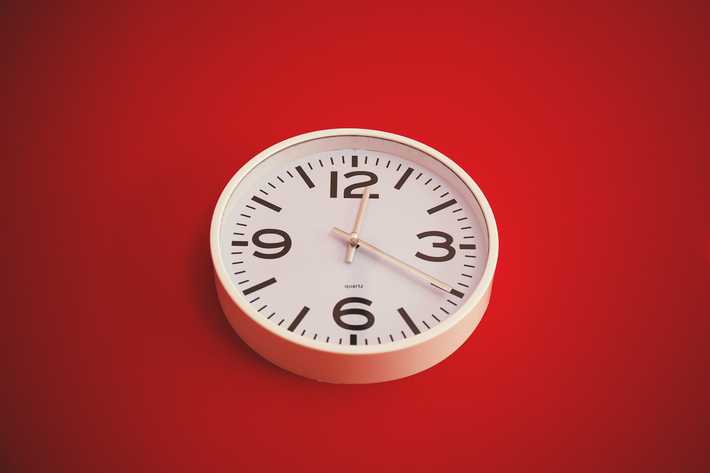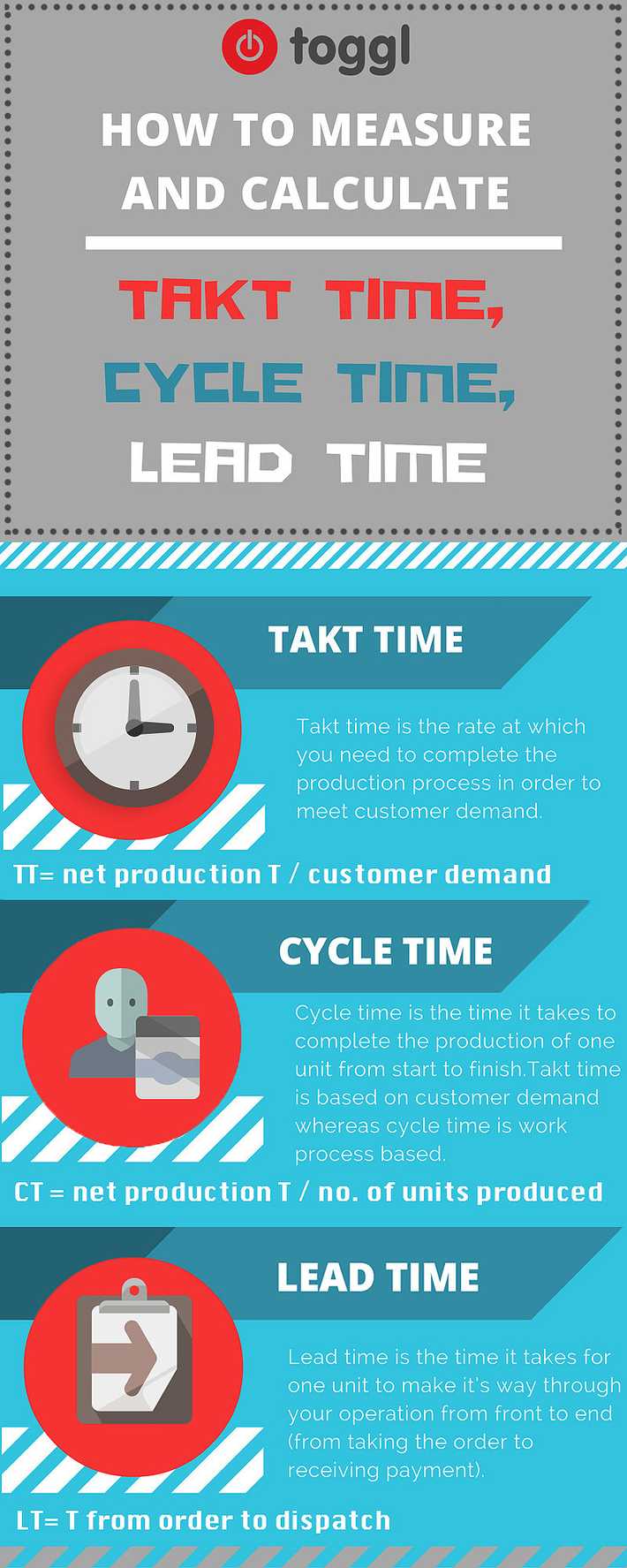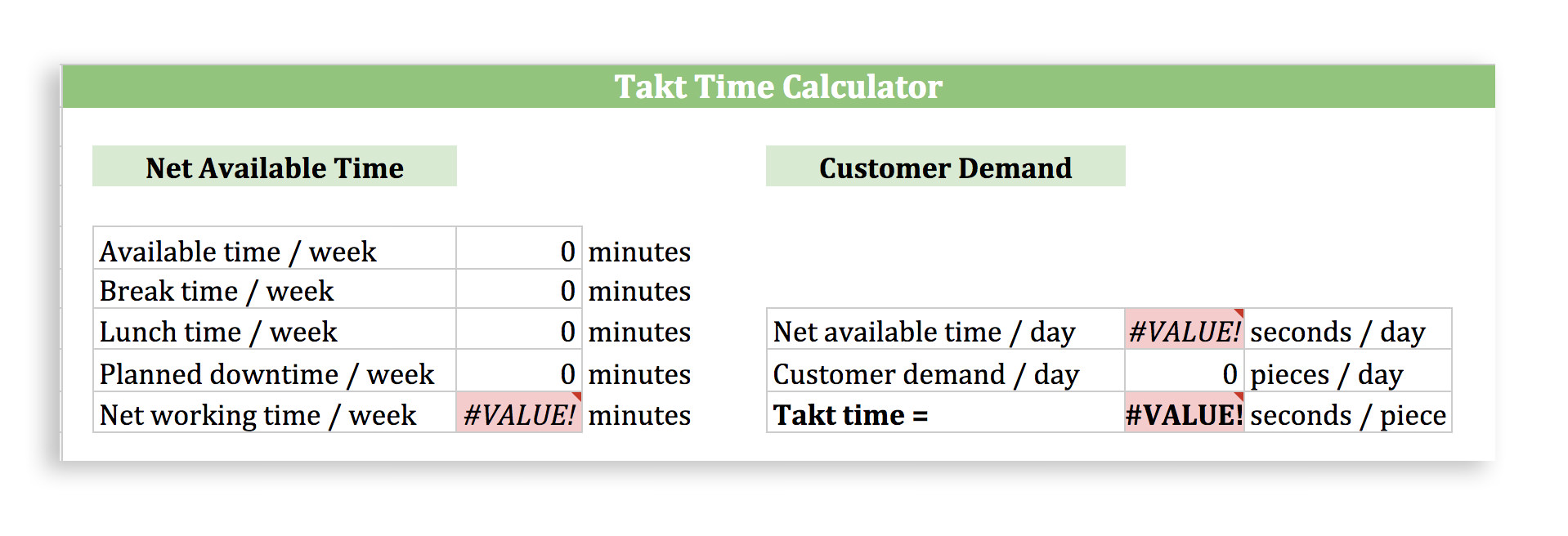
Takt Time vs Cycle Time vs Lead Time
Three time-management strategies
To optimize the workweek, managers can choose between several time-measurement strategies. Many people confuse Takt Time, Cycle Time and Lead Time, but you don't have to be one of them!
In a nutshell, Takt Time is the time between starting to work on one unit and starting the next. Cycle Time is the average time it takes to finish one unit. Lead Time is the total time it takes from receiving an order to delivering an item.
Still confused? No worries. Read on and get a solid grasp of these three common time metrics.

What is Takt Time?
"Takt time" is the rate at which you must complete productionin order to meet customer demand.
In German, "takt" means "pulse." Just as your heart rate can speed up or slow down, your company's takt time can be high or low, compared to customer demand.
Managers measure Takt Time to eliminate over- and underproduction. This metric can increase quality control standards. Managers optimize systems by matching takt time with customer demand.
As Henry Ford put it:
Time waste differs from material waste in that there can be no salvage. The easiest of all wastes and the hardest to correct is the waste of time, because wasted time does not litter the floor like wasted material.
With a steady "heartbeat" across your production systems, you can ensure consumers get the right products of the right quality at the right time.
Benefits of Calculating Takt Time
- Estimate service delivery processes
- Maintain a constant production flow
- Standardize work processes
- Increase efficiency and decrease training times
- Set realistic time targets
- Minimize overtime
- Reduce errors and increase quality In short, Takt Time helps you notice overworked teams sacrificing quality in order to meet unreasonable standards. On the other hand, you may discover idle teams with nothing to do. If you're looking to evenly distribute workloads, Takt Time can assist.

How to calculate Takt Time?
To get the data you need to calculate Takt Time, have your team track net production times (NPT) in Toggl Track.. NPT equals the time they spend producing a product/service (excluding breaks, meetings, etc.).
Toggl Track reports will determine your total NPT for a certain amount of time. Divide this number by the number of units your customers required in that period to calculate your Takt Time. This number represents your optimal production time per unit.
Imagine you run a company that whittles large, wooden crochet hooks for crocheting clubs.. If your average weekly order is 45 hooks and your 3 employees each work 30 hours a week (excluding breaks, etc.), your Takt Time equals 2:
TT [2] = NPT [90] / D [45]
This means one person needs to start a new hook every two hours to keep pace with demand.

Takt Time Calculator
At the end of the week (or the month), download your reports from Toggl Track and enter the appropriate data into this Takt Time Calculator.
What is Cycle time?
Cycle Time is the time it takes to complete the production of one unit from start to finish. Through tracking completed items and net production time (NPT), you can determine the time it takes to complete one cycle (one crochet hook, in the above example).
If your crochet hook team worked 90 hours in a week and whittled 30 hooks, your cycle time would equal 3.
How to calculate cycle time?
CT [3] = NPT [90] / U [30]
Since your cycle time is 3 hours per hook and your Takt Time is 2 hours, your team isn't keeping up with demand. You'd better do something about that!
Takt Time vs. Cycle Time
Takt Time measures customer demand; Cycle Time measures work. In the above example, you can see that your team isn't working fast enough to meet demand. To meet demand, you need to raise your CT.
Say you teach your team a faster hook-whittling technique that doubles their production speed. Your cycle time would equal 1.5, beating your Takt Time of 2:
CT [1.5] = NPT [90] / U [60]
But now is your team overproducing? Should you really keep up this pace? Will your production facility rapidly become overcrowded with surplus crochet hooks?
What is Lead Time?
Lead Time is the time it takes for one unit to go through the entire production cycle, from taking the order to payment receipt. If Lead Time is much higher than Cycle Time, it means you have a lot of units in your inventory.
Continuing with the crochet hooks. Say your hooks ship via carrier pigeon, just for the romance of it all. How will the time lag impact your business?
How to calculate Lead Time?
If it takes an unladen pigeon 10 minutes to deliver an order request, and 20 minutes to return with a crochet hook in its beak, your lead time will equal 2:
LT [2 hours] = WT [10 minutes] + CT [1.5 hours] + DT [20 minutes]
Lead Time vs. Cycle Time
Lead Time measures the time elapsed between order and delivery. In other words, it measures your production process from your customer's perspective. Cycle Time starts when the actual work begins on the unit, and ends when it is ready for delivery. In other words, Cycle Time measures the completion rate and Lead Time measures the arrival rate.
From the customer's perspective, it takes 2 hours to get a crochet hook from your company. Although your Lead Time and your Takt Time are equal, your company is still overproducing crochet hooks.
Aim to balance your Cycle Time with your Takt Time, which measures demand -- not your Lead Time, which measures customer waiting times.
Measuring Takt Time, Cycle Time and Lead Time
With Toggl Track, it's easy to fold Takt Time, Cycle Time, and Lead Time into your workweek. All of these time-tracking systems can be vital in making sure your work processes are flowing in the most efficient manner possible.
Sign up for free
Prefer a product demo instead?
Teams of 20+ are eligible for a personalized demo to see how Toggl Track can meet your time tracking goals
